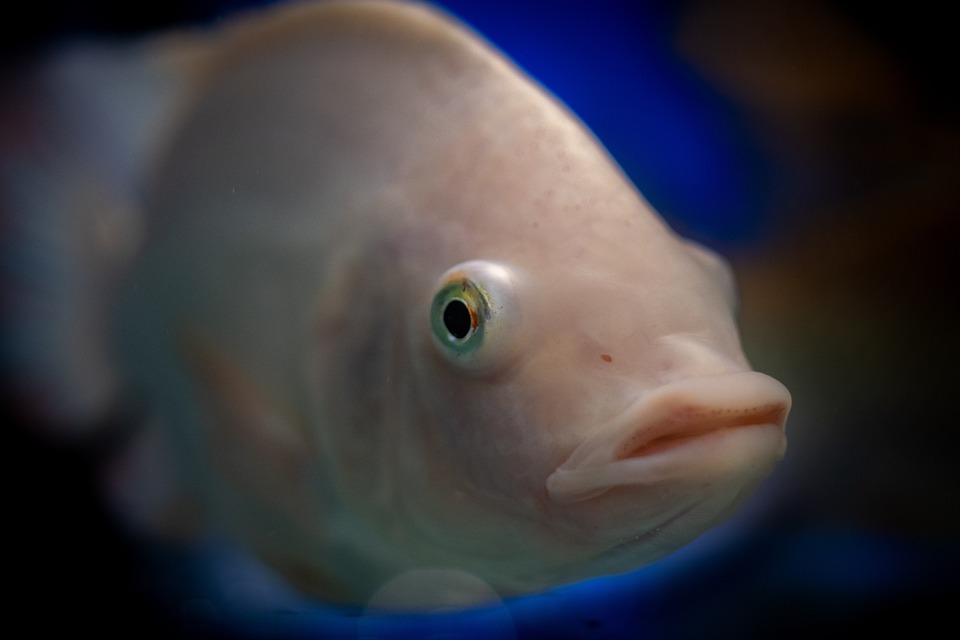Fish Tank Gill Flukes: An In-Depth Guide to Recognition and Treatment
Understanding the Threat of Gill Flukes in Fish Tanks
Gill flukes, scientifically known as Dactylogyrus and Gyrodactylus, are parasitic flatworms that can wreak havoc on the health of fish in aquariums. These microscopic pests primarily target the gills of fish, causing irritation, inflammation, and potentially fatal respiratory problems if left untreated. In this comprehensive guide, we will delve into the signs and symptoms of gill flukes, how to diagnose and treat the condition, and important preventive measures to keep your fish tank fluke-free.
Recognizing the Symptoms of Gill Flukes
Gill flukes infestations can be challenging to detect, as they often remain hidden within the gill tissue. However, vigilant fishkeepers can spot several indicators that their fish might be suffering from this parasitic menace. Keep an eye out for the following telltale signs:
1. Increased Gill Flapping and Rapid Respiration: Observe your fish for excessive gill movement, as if they are gasping for air. Rapid breathing is often an early sign of gill flukes.
2. Red or Inflamed Gills: Infected fish may develop redness or inflammation around their gills, indicating irritation caused by the parasites.
3. Lethargy and Reduced Appetite: Gill flukes can cause significant stress to fish, leading to lethargy, decreased activity levels, and loss of appetite.
4. Rubbing and Scratching: Fish infected with gill flukes may exhibit increased rubbing against tank decorations or substrate, trying to alleviate the discomfort caused by the parasites.
5. Fish Flicking or Flashing: If you observe your fish repeatedly flicking their bodies against objects or flashing erratically, it could be a sign of gill fluke irritation.
Diagnosing and Treating Gill Flukes
Early diagnosis and prompt treatment are crucial in combating gill flukes. Here’s a step-by-step guide on how to address this common fish tank ailment:
1. Perform a Thorough Examination: Carefully observe your fish for any of the symptoms mentioned earlier, paying particular attention to their gill area. Use a magnifying glass if necessary.
2. Quarantine Affected Fish: If you suspect gill flukes in your aquarium, it’s advisable to isolate and quarantine the infected fish in a separate tank. This prevents further spread of the parasites to other healthy fish.
3. Treatment with Medications: There are several antiparasitic medications available specifically formulated to target gill flukes. Consult with a veterinarian or a knowledgeable fish store professional to choose the most appropriate treatment for your fish.
4. Follow Medication Instructions: Administer the medication precisely as instructed on the product label or as advised by the professional. Pay close attention to the recommended dosage and duration of treatment.
5. Monitor and Observe: Keep a close eye on the treated fish during and after the medication course. Observe for any improvement in their condition and make sure to complete the entire treatment cycle as recommended.
Preventive Measures to Keep Gill Flukes at Bay
Prevention is always better than cure when it comes to gill flukes. Take the following preventive measures to minimize the risk of infestation in your fish tank:
1. Quarantine New Fish: Before introducing new fish to your aquarium, quarantine them in a separate tank for a few weeks to ensure they are free from any parasites, including gill flukes.
2. Maintain Optimal Water Quality: Clean and properly maintain your aquarium, ensuring optimal water conditions. Regular water changes, adequate filtration, and monitoring ammonia and nitrate levels are essential to keep fish healthy and resistant to disease.
3. Avoid Overcrowding: Overcrowding stresses fish and weakens their immune systems, making them more susceptible to diseases like gill flukes. Keep a suitable number of fish based on the tank size and species requirements.
4. Avoid Sharing Equipment: Never share nets, siphons, or any equipment between tanks without proper sterilization. This prevents cross-contamination and potential introduction of parasites.
5. Regular Health Checks: Perform routine health checks on your fish, observing their behavior, appetite, and physical appearance. Early detection of any abnormalities allows for timely intervention.
FAQs about Fish Tank Gill Flukes
1. Can gill flukes affect any type of fish?
– Gill flukes can infect a wide range of freshwater and saltwater fish species, so it’s crucial to be vigilant regardless of the fish in your tank.
2. Is it possible for gill flukes to spread to other tanks?
– Yes, gill flukes can spread between tanks if equipment, water, or infected fish are transferred without proper quarantine or sterilization procedures.
3. Will gill flukes disappear on their own?
– No, gill flukes will not disappear without treatment. They can reproduce rapidly and cause significant harm to fish if left untreated.
4. Can I use natural remedies to treat gill flukes?
– While some natural remedies may offer limited benefits, it is generally recommended to use proven antiparasitic medications to effectively treat gill flukes.
5. How often should I perform water changes during gill fluke treatment?
– Regular water changes are essential during treatment to maintain water quality. Follow the instructions provided with the medication or consult a professional for specific guidance.
Remember, the health and well-being of your fish rely on your attentiveness and proper care. By recognizing the signs of gill flukes, taking swift action, and implementing preventive measures, you can ensure a thriving and disease-free aquarium environment for your beloved aquatic companions.









